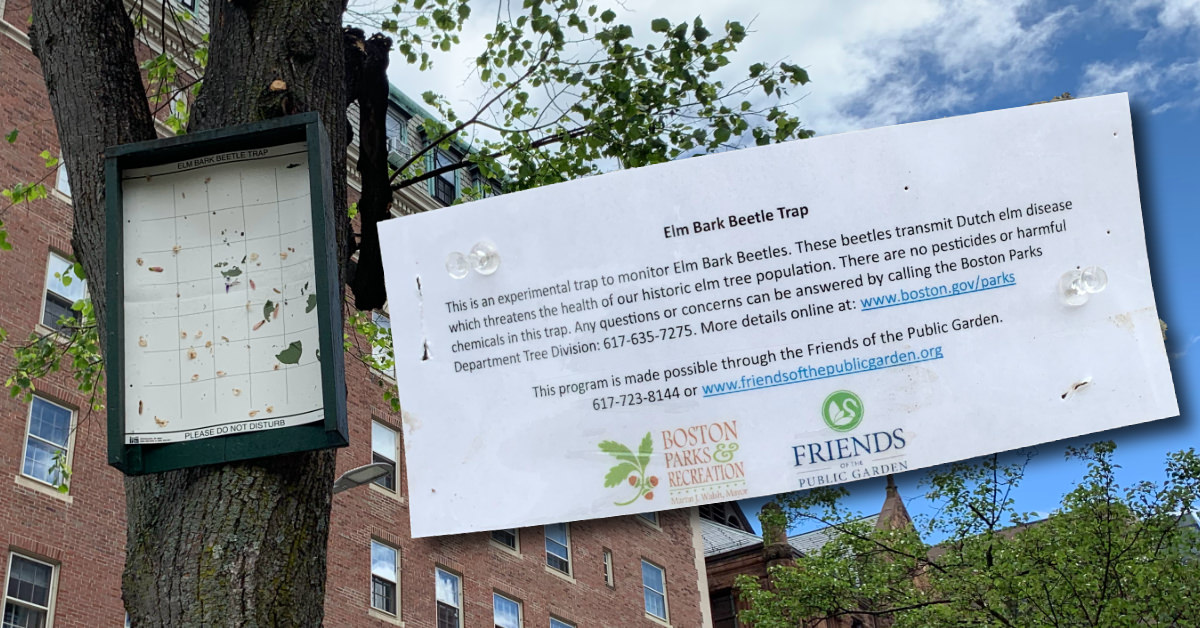Elm Bark Beetle Trap
The Elm Bark Beetle is responsible for killing lots of trees in Boston
As you walk around the Boston Public Gardens you may see a strange white box on some of the Elm Trees. This is Elm Bark Beetle trap. The beetles transmit Dutch Elm disease which have been killing trees.

Six Things I learned about the Elm Bark Beetle
- The Boston Public Commons use to have a lot of Elms trees but many of them had to be cut down because of the Elm Bark Beetle.
- There's only two known natural predators to the Elm Bark Beetle: Woodpeckers and Wasps.
- The beetle is originally from Europe and was first spotted in 1909. By 1933 the beetles were spotted in seaports of Boston, New York and Philadelphia.
- The Friends of the Public Garden removes ailing trees to prevent the spread of the disease. (Several trees near the Park Street Station were removed because of the Dutch Elm disease.)
- You can learn a lot more about how to Identify and Manage the Dutch Elm Disease on the United States Department of Agriculture document.
- In 2010, one of the oldest Elms Trees in New England had to be cut down because of the Dutch Disease: https://www.csmonitor.com/The-Culture/Gardening/2010/0112/New-England-s-oldest-elm-tree-to-be-chopped-down
Text of the Sign below the Beetle Trap
This is an experimental trap to monitor Elm Bark Beetles. These beetles transmit Dutch elm disease which threatens the health of our historic elm tree population. There are no pesticides or harmful chemicals in this trap. Any questions or concerns can be answered by calling the Boston Parks Department Tree Division: 617-635-7275. More details online at: www.boston.gov/parks
This program is made possible through the Friends of the Public Garden. 617-723-8144 or www.friendsofthepublicgarden.org
